Posted on October 31, 2022
Only a handful of films can universally unite audiences around the holidays. This honour is usually reserved for titans like Frank Capra's IT'S A WONDERFUL LIFE, HOME ALONE, HOME ALONE TWO: LOST IN NEW YORK, HOME ALONE THRE- maybe we can stop there, actually.
These films smell like your mother's house, feel like a weighted blanket, and taste like a holiday spice blend that even Martha Stewart couldn't whip up in her dizziest daydreams. It's easy to see why families worldwide choose these movies to score the more gently festive moments of their lives.
How, then, did John Carpenter's HALLOWEEN, a fun family watch about an escaped psych ward patient who stalks and slaughters teenagers, come to be regarded as a holiday classic?
This is the story of how a crew of veritable teenagers working with bubble gum and duct tape created the definitive spooky season movie and fundamentally changed the horror film genre forever.
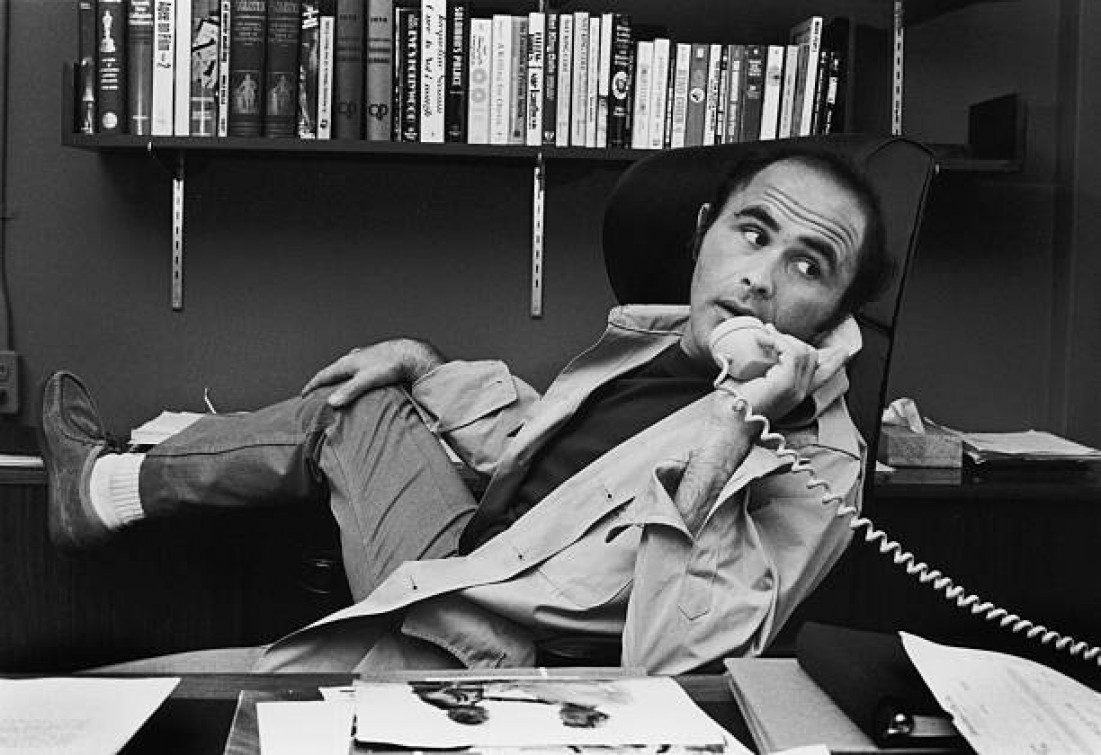
1975: HALLOWEEN producer, Irwin Yablans speaking on a telephone while sitting at a desk with his foot propped up (Photo by Brian Hamill/Getty Images)
While John Carpenter usually gets the lion's share of the credit, it was Executive Producer Irwin Yablans who came up with the film's premise. A long-time Warner Brothers employee, Yablans had become frustrated climbing up the business side of show business, feeling he had more to give. His wife, who often worked alongside him, was not only aware of his potential but very tired of hearing him complain about his lot at WB. One afternoon, she told him, "If you know so much about making movies, why don't you make one?"
Proving that it is always a good idea to listen to your wife, Irwin's independent company quickly scored the distribution for John Carpenter's first proper film, THE SIEGE. While SIEGE did flop, it brought together the dream team, introducing John Carpenter to his long-time collaborator Debra Hill, with whom he eventually co-wrote HALLOWEEN. While Yablan's partnership with Carpenter wasn't immediately profitable, It was clear to the producer that Carpenter and his crew of fellow USC filmmakers were brimming with potential.
"I WANT THE AUDIENCE TO BE FRIGHTENED, NOT REPULSED"
Yablans was itching to work with Carpenter and Co. again, wracking his brain for film ideas day and night. It was midnight when the idea for HALLOWEEN struck: "Why not make a movie about babysitters being terrorized in a single night? Why not make it on Halloween, the scariest night of the year?"
Immediately after, he called Carpenter. Desperate for a job, the director essentially shrugged and said, "Okay." on the condition that his name be in the title. This was an audacious request for an unknown filmmaker to make, but Yablans eventually acquiesced, unknowingly enshrining young Carpenter's name in the history of cinema.
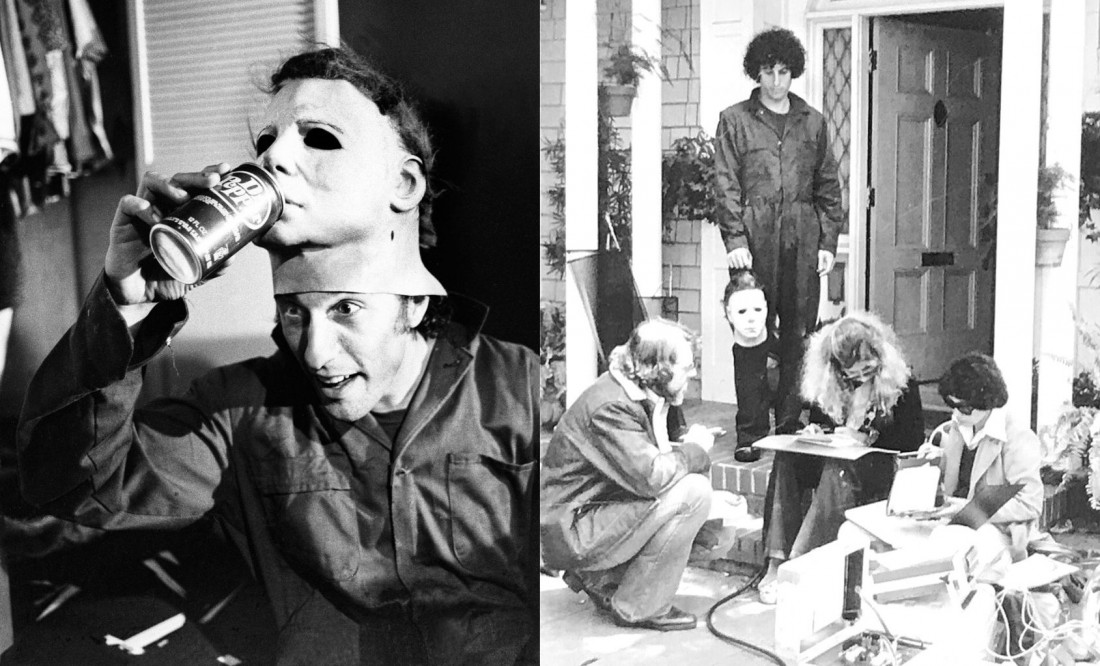
1977: Nick Castle feeding Michael Myers a Dr.Pepper (IMDB) | Debra Hill, Nick Castle, Dean Cundey, Erica Eulland on set
Yablans, who grew up listening to radio horrors, established from the beginning that he didn't want abundant blood and gore in the film. His theory was that by creating a theatre of the mind, audience members would conjure a mental image far more terrifying than anything they could come up with. It also didn't hurt that it saved them from having to budget for extra SFX. While taking something like fake blood out of the budget might seem trite, considering the amount of money the team was working with, it's evident why it was essential to pinch every penny. Despite being very eager to make a film with Carpenter, Irwin Yablans' funding plan was risky at best. He had promised John Carpenter a budget of $300,000, an already meagre sum. To make matters worse, he didn't actually have $300,000 or an interested investor ready to spring for the movie.
Yablans began chasing after Moustapha Akkad, an experienced film investor to whom he had sold 51% of his company. Akkad was painfully uninterested in the whole project, already tied up shooting a historical epic in Morocco starring Rod Steiger. Getting the feeling that Akkad felt this project was beneath him, Yablans appealed to his business partner's pride, goading him into budgeting the film by suggesting Akkad wasn't interested simply because he didn't have enough money. Outraged by the accusation, Akkad folded instantly, signing the deal right then and there, saving his pride and the horror genre in the process.
Because the budget was so tight, the film's production quickly became a family affair. As Jamie Lee Curtis put it, "Everyone on that set was 19, 20, 21, and it was mostly men. It was just these people and then everyone's girlfriends doing makeup, wardrobe, set dressing..." Most of the crew were students or amateur filmmakers who heard about the production by word of mouth. Luckily for Carpenter, the film was being shot in California, giving them access to all the eager, out-of-work creatives they might need. It's been reported that some crew worked for free, doing 12-14 hour days just for the on-set experience. Even Jamie Lee, then a relatively unknown talent, helped move camera boxes between scenes.
"AS SOON AS THE SECOND MASK CAME OUT OF THE DRESSING ROOM, IT CREATED A SHIVER THROUGH THE ROOM, AND WE KNEW WE HAD SOMETHING SPECIAL"
Keeping with the film's budgetarily-mandated tape-and-glue approach, the crew had to get creative when creating Michael Myer's legendary look. Debra Hill and John Carpenter's screenplay was pretty general in their visual description of their hallowed villain, stating: "He [Michael Myers] wears a Halloween mask made of rubber with the grotesque features of a man." It was up to the film's production designer, editor and general Swiss Army man, Tommy Lee Wallace, to find said mask quickly and cheaply.
Wallace, whose assignment was literally just "go find a mask," headed down to a magic shop on Hollywood Boulevard in search of Horror's most infamous villain. The shop's selection included horrifying characters like sad clowns, werewolves and Richard Nixon, but Wallace saw the most potential in a $2 Captain Kirk mask. Ever the artist, he used shears to widen the eye holes, then shaved off the sideburns and eyebrows. Lastly, he spray painted the face white and the hair a darker brown. When it came time to present the mask for judgment, everyone agreed: there was something instantly terrifying about Captain Kirk. John Carpenter describes the moment: "As soon as the second mask came out of the dressing room, it created a shiver through the room, and we knew we had something special."
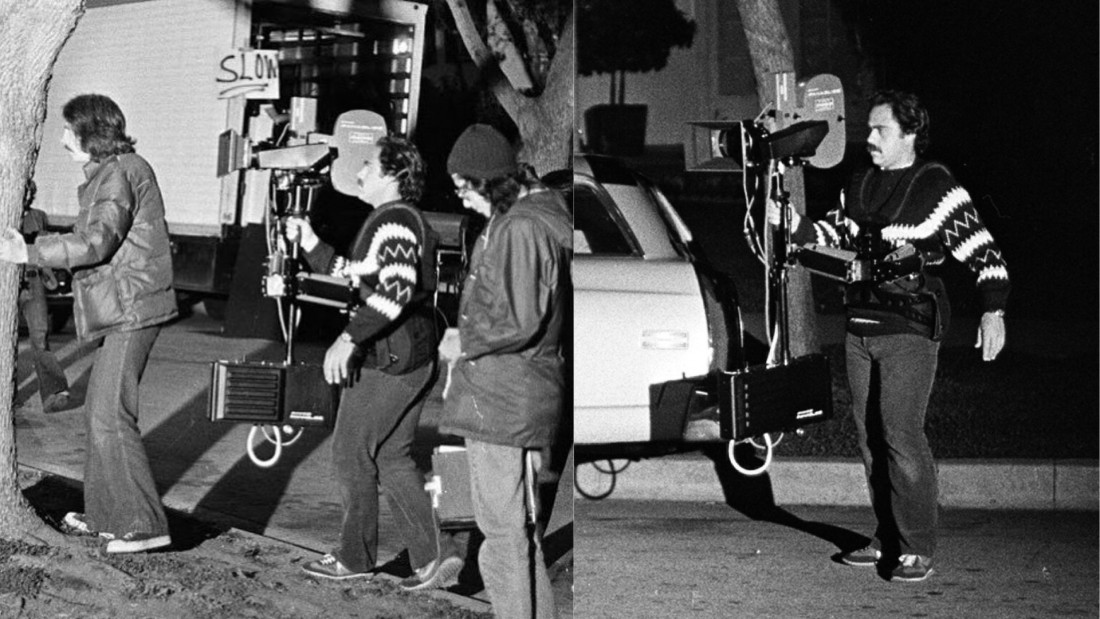
1977: John Carpenter blocking the iconic opening shot of HALLOWEEN using the PANAGLIDE (Photo by Kim Gottlieb-Walker/On Set with John Carpenter)
If Carpenter and Co. didn't blow the budget on crew or sets or even on their main villain, what did they blow the budget on?
Of the $300,000, $70,000 was spent on Panavision equipment, most exorbitantly, the Panaglide. The Panavision Panaglide was the edgiest piece of filmmaking technology in 1977, and John Carpenter had to have it. By Carpenter's logic, filming the movie with a proper, high-budget film camera would trick the audience into thinking this was a high-budget production. He believed audiences would put enough trust in a film that looked professionally made to overlook the low-budget sets, costumes and talent.
HALLOWEEN was revolutionary in its use of the Steadicam, only the second production to ever film with it, especially when they used it to place the audience in Michael's POV. In that era, filmmakers mainly used static cameras, stiffly executing any movement through dollies or more freely through handheld operators. Still, even the steadiest cameramen could not compete with the Panaglide since film cameras used to be incredibly large, heavy and difficult to maneuver. Even outside of the POV shot, the smoothness of the movement made for a more immersive experience for the audience by punctuating the stalking element of the film.
"PEOPLE WERE JUMPING OUT OF WINDOWS AND DANGLING OFF BALCONIES TO MOVE THEIR LIGHTS"
Operators wore the Panaglide like a vest, much like a modern-day gimbal, which proved to be quite the challenge thanks to the aforementioned weight and size of '70s film cameras, which carried actual rolls of film. This proved problematic throughout the 20 days of filming, but it was on the last day, or should we say night, that the crew was tested. As a fun little treat for his crew of underpaid teens, Carpenter scheduled the mammoth, four-minute, one-take POV shot to be filmed in a single night.
The free movement of the camera made re-setting and general staging a colossal pain for the crew. Since every inch of the set was "fair game" for the Panaglide, the crew had to play a high-stakes game of indoor parkour to clear the shot. The 2nd AD, Krishna Rao, recalls crew members jumping out of windows to move their lights, dangling off balconies and hurling couches out of the way. Throughout 20 takes, they ran through not one, not two, but three camera operators who couldn't be strapped into the Steadicam for one more minute. They shot for 16 hours, with a rabid and exhausted crew giving their all to be a part of movie history, only stopping because the sun was rising. As 1st AD Rick Wallace said in a 2021 interview, "I'm convinced that if it were still night, we'd still be shooting."
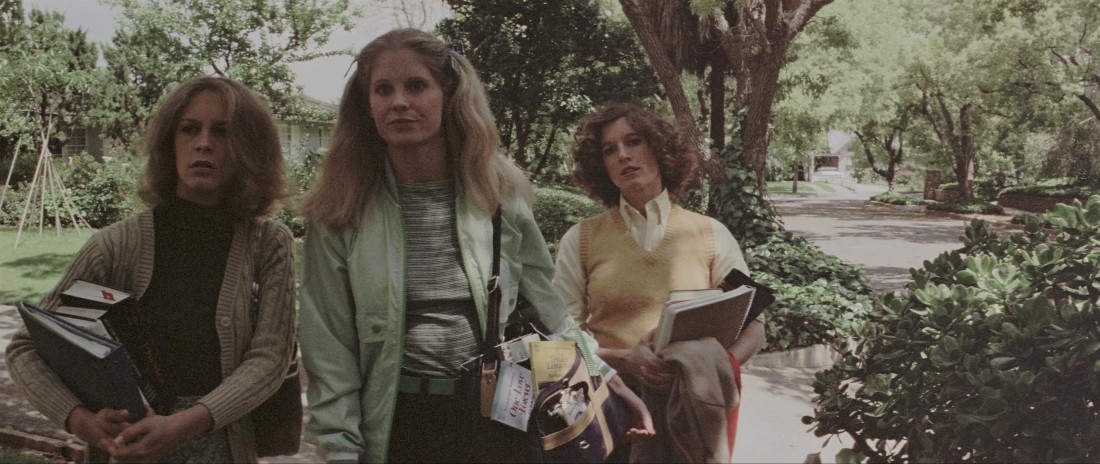
1978: Jamie Lee Curtis, P.J. Soles, and Nancy Kyes in Halloween (IMDB)
When the sun crept over the horizon on that morning in 1977, John Carpenter finally called a wrap on the filming of HALLOWEEN. With the finished film in his hands, Irwin Yablans was now tasked with finding an audience for this most unfashionable picture. He reached out to every studio in town, pulling in his old contacts at Warner Brothers to set up a preview screening. As it turned out, no one from the studios showed up, uninterested in distributing horror films because they felt horrors never made any money. Scorned, Yablans decided to distribute the film himself.
He soft-launched the movie in Kansas City, Missouri, a small market that closely resembled the middle-American setting of the film. Not only would this enhance the movie's resonance, but if the film flopped, Yablans could bury the loss and try his luck in a different market. But he never had to; the film debuted to disappointing sales numbers the first weekend but doubled, then tripled, then did ten times the sales the following weekend. The success was born of pure word of mouth. Audiences were running home after the film, picking up the phone and telling all their friends to see this movie, and that is the kind of marketing that a big budget can't buy.
Emboldened by this success, Yablans tried his luck at the Chicago Film Festival, where HALLOWEEN received glowing reviews from prominent critics like Roger Ebert and The Village Voice, launching it into the mainstream, where it quickly exploded. Upon its wide release, HALLOWEEN became the most profitable independent film release in history, grossing over 70 million dollars. Audiences were screaming, quoting the film, yelling at the screen and creating a ROCKY HORROR style, interactive experience at every sold-out screening.
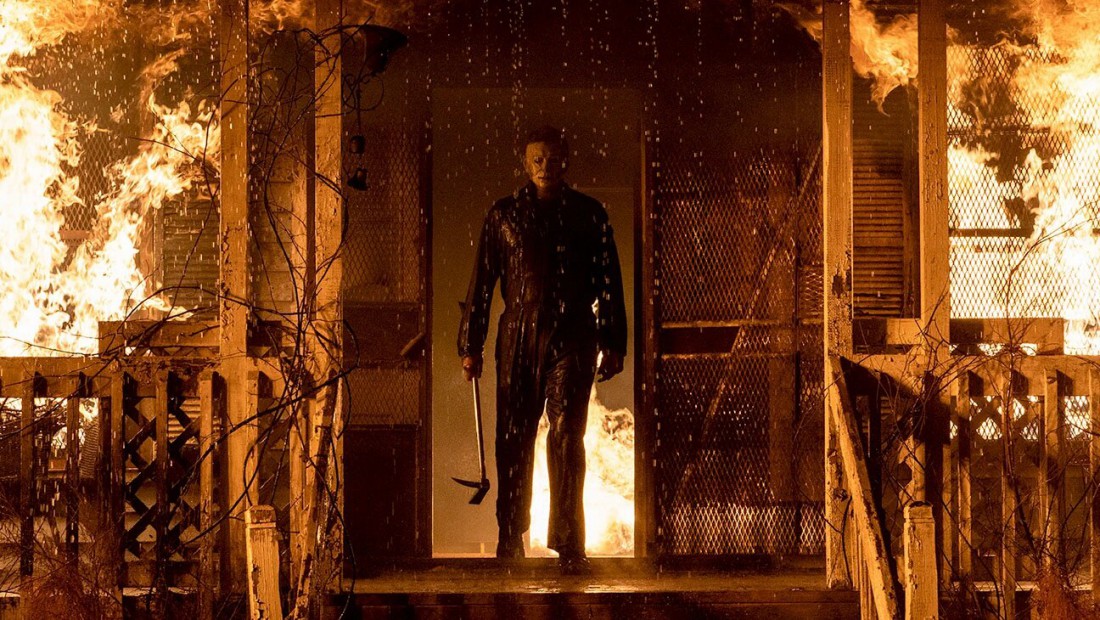
2021: Michael Myers in HALLOWEEN KILLS (IMDB)
Beloved and revered, HALLOWEEN was the first horror film to integrate and elevate classic horror tropes to create the ultimate horror film. These tropes remain present in almost every horror film to this day. Laurie fulfilled the Final Girl trope with her virginal nature and unisex name. The Death by Sex trope saw its most significant resurgence since PSYCHO, with Laurie's more promiscuous friends meeting grizzly ends. The film was effortlessly scary in its simplicity, and while the blood and gore indeed returned in the films it inspired, the quiet eerie-ness created a space for more nuanced and understated villains and plots in the horror genre. In this way, HALLOWEEN became the root of every other slasher film that came after it, influencing horror giants like FRIDAY THE 13TH and NIGHTMARE ON ELM STREET.
This instant classic empowered a generation of filmmakers, inspired by the skill and creativity of John Carpenter's rag-tag film crew, to pick up a camera and make their own masterpieces. In the following decades, no holiday was safe from having a dedicated horror film. There came a massive increase in the popularity of seasonal slasher films like MY BLOODY VALENTINE, NEW YEARS EVIL, SILENT NIGHT DEADLY NIGHT and APRIL FOOLS DAY. Even mainstream releases like FATAL ATTRACTION and SLEEPING WITH THE ENEMY showed signs of John Carpenter's influence. Most significantly, seeing a woman in the '70s write the highest-grossing independent film of all time inspired countless female filmmakers to follow in the groundbreaking footsteps of Debra Hill.
Despite Universal and Mustafa's attempts to milk the series dry with a slew of reviled sequels, the HALLOWEEN franchise was revived for the last time in 2018. These sequels, which wipe the slate clean by disregarding the many sequels that preceded them, have been immensely successful and received great praise from critics and original fans alike.
This iconic franchise is coming to an end after 44 years with one final film appropriately titled HALLOWEEN ENDS. The film is screening in theatres now and we highly recommend you give it a watch to celebrate the conclusion of this historic series as Laurie Strode and Michael Myers share one last dance.
Back to blog listing